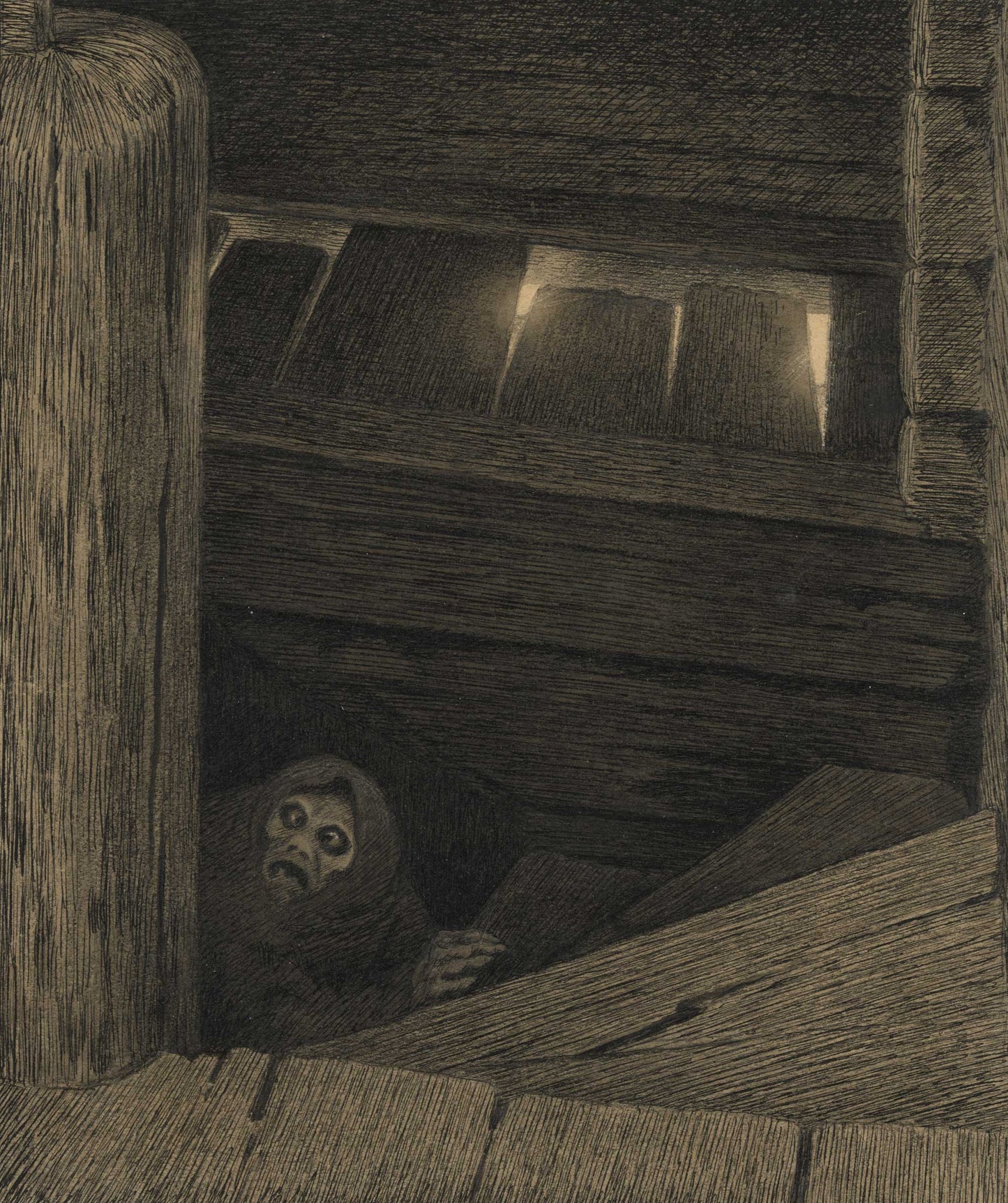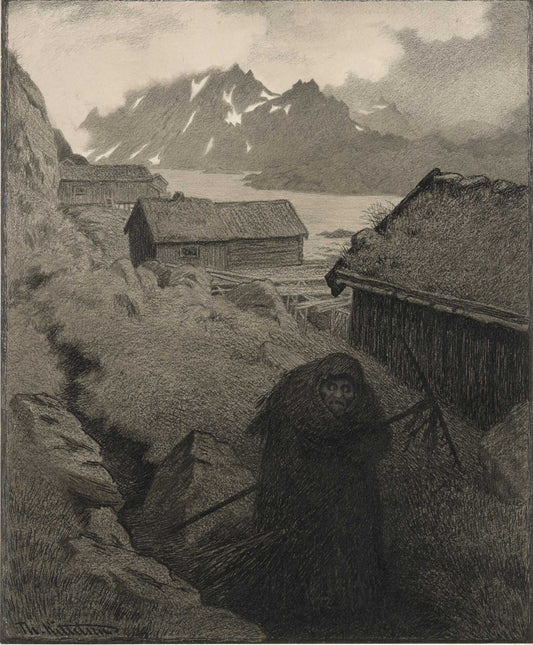Theodor Kittelsen
Pesta lists up the stairs in the house
Pesta lists up the stairs in the house
Couldn't load pickup availability
Experience museum-quality art from the National Museum's collection! Our Posters are printed on premium quality Litho White Matt (230 g) photo paper and feature a visible National Museum logo on the white border. Artprints are produced on exclusive Museum Rag (260 g) cotton art paper for an extra luxurious finish. Each print is made to order by Dáidda Printlab to ensure the highest quality and detail in the reproduction.
About the original:
Date: Between 1894 and 1896
Other titles: Pesta on the Stairs (ENG)
Designation:
Drawing
Material and technique: Wash, pencil, pen and black marker on paper
Technique: Lavering Pencil Pen Black marker
Material: Paper
Dimensions: 273 x 228 mm
Subject: Visual arts
Classification: 532 - Visual arts
Motif: Illustration
Acquisition: Purchased 1982
Inventory no.: NG.K&H.1982.0026
Part of exhibition: Lost Paradise: Symbolist Europe, 1995
The magical north. Finnish and Norwegian art around 1900, 2015
Theodor Kittelsen, 2007 - 2008
Registration level: Single object
Owner and collection: The National Museum of Art, Architecture and Design, Visual Art Collections
Photo: Børre Høstland/Thorkildsen, Morten
Delivery
Delivery
Pickup: You can pick up your package from us shortly. You will receive a pickup notification when it is ready.
Postal shipment: Delivery by Posten normally takes 2–5 days in Norway and up to 14 days to Europe and globally.
Packaging: All products are made to order and shipped rolled in environmentally friendly packaging.

See more works
-
Far, far away he saw something bright and glittering
Vendor:Theodor KittelsenRegular price From 150,00 NOKRegular priceUnit price per -
Pesta lists up the stairs in the house
Vendor:Theodor KittelsenRegular price From 150,00 NOKRegular priceUnit price per -
Pesta with sea arches and mountains in the background
Vendor:Theodor KittelsenRegular price From 150,00 NOKRegular priceUnit price per

Theodore the tickle
After more than 100 years, Nøkken, Skogtrollet and Pesta are still icons in the consciousness of many Norwegians. Who is the artist behind these fabled figures? As a young man, Theodor Kittelsen wanted to become a painter, but there are signs that he eventually succeeded most of all. Here he finds outlet for his sense of humor and enthusiasm for anecdotes, fairy tales, comedy and, not least, for the magical in nature.
Kittelsen's pictures of Cinderella, trolls, princesses and animals have fascinated many generations. In Troldskab, the series which consists of a number of troll nature pictures with Kittelsen's own text, he personifies nature and the forces of nature that he himself experiences up close. The boy scouting towards the golden castle in the distance, from the painting series Soria Moria castle, has almost become a symbol of the dream of success in life. Nature moods "It's not the dramatic 'Effects' in nature that I care about. It is the mysterious Drag in it, the quiet, the secretive..." Kittelsen in Aftenposten, 9/10/1904. Kittelsen's close relationship with nature, not only the mysterious and secretive, but also the durable and evocative, is reflected in his drawings.
The drawings from Lofoten, which he made while living there, are among his main works. The same is true of the beautiful and tranquil watercolors from Jomfruland, which describe the bright summer landscape at the far end of the archipelago at Kragerø. He likes to start from realistic experiences of the landscape, but with elements of old folk tales he adds an extra dimension. Again, the works bear witness to the joy of drawing and combining different techniques. The younger Kittelsen is not fond of winter, but eventually he becomes very fascinated by rendering snow and snow-covered landscapes. Snow-heavy spruces with dompap or jumping squirrels turn into fascinating winter adventures. In the illustrations for Svartedauen, we meet a skilled series creator. Here Kittelsen combines historical material from the Middle Ages with his own attraction to the dark and melancholic in nature. Pictures, text and vignettes are based on anecdotes about rural people's encounter with the folk legend about the plague and death. Landscapes and houses in the series can also be traced back to various places where the artist himself has lived, from the farm Sole in Eggedal to Sund in Lofoten. Pesta's gaunt and crooked figure gives us a glimpse of the horror and fear of the past. By combining pencil with wash, charcoal and grease pencil, he enhances the atmosphere in the pictures.
Fantasy and satire Kittelsen is best known for the drawings of Asbjørnsen and Moe's folktales. Smørbukk, Kvitebjørn King Valemon and Ashkeladn who raced with the troll have a special position in today's image world as well. Caricatures and witty drawings are another circle of motifs he has been working on throughout his life. Here he ironises and teases people's quirks and pettiness, often with a sideways glance that also reveals his sympathy for the weak in society. The tick is also known for its sympathy with the animals and likes to give the animals human qualities, as in the animal fable Do the animals have souls? The museum's collection contains, in addition to the aforementioned painting series Soria-Moria castle of twelve pictures, a further seven paintings and some 260 drawings.





